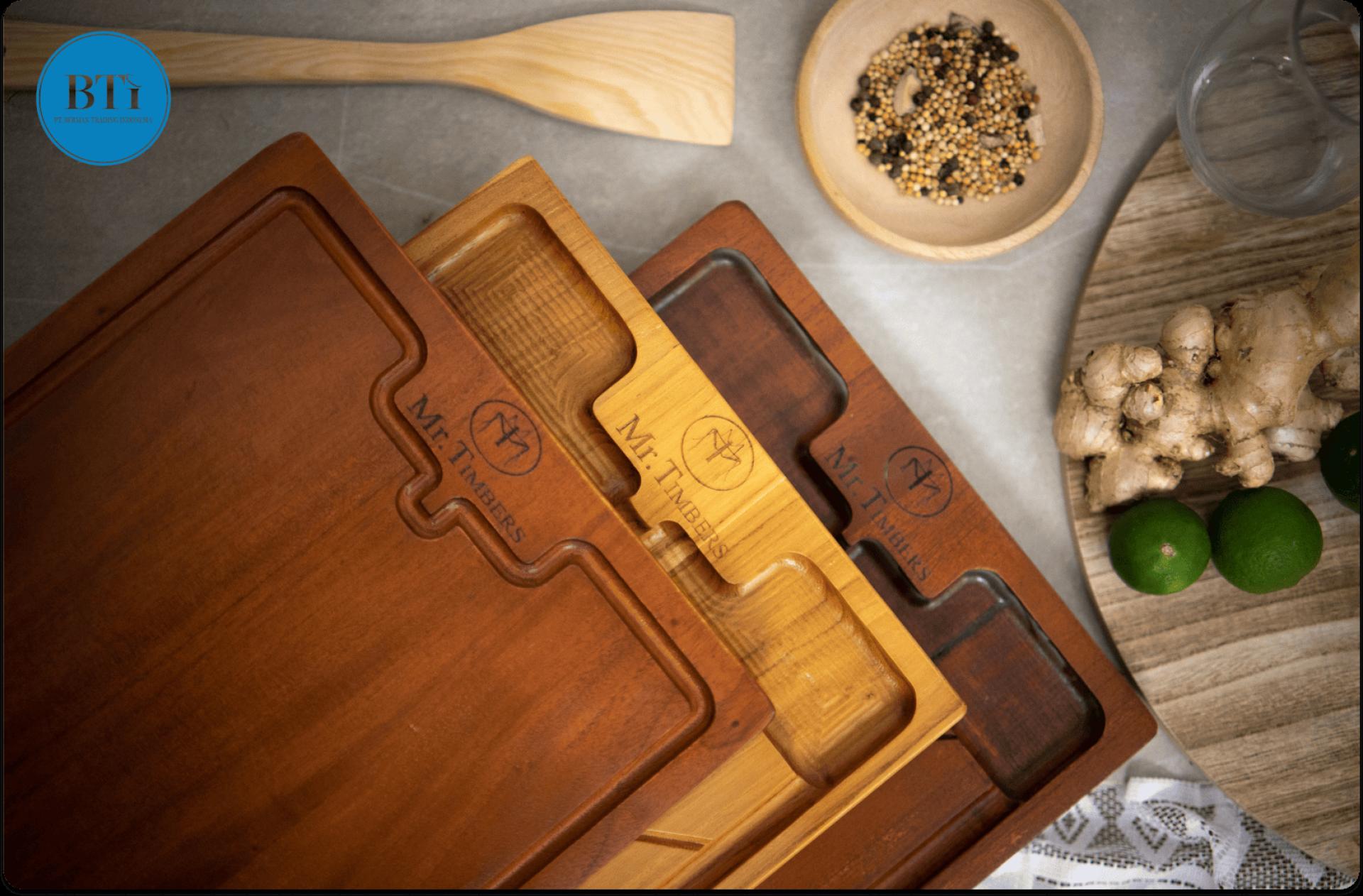A chopping board is one of the most essential tools in every kitchen. Beyond practicality, the choice of wood affects durability, appearance, and even food safety. Here are ten popular types of wood commonly used to make chopping boards:
1. Teak
Known for its natural oils and resistance to moisture, teak is one of the best woods for chopping boards. It’s durable, easy to maintain, and has a beautiful golden-brown grain.
2. Maple
Hard maple is a classic choice. Its fine, uniform texture makes it gentle on knives, while its durability ensures long-lasting use.
3. Walnut
Walnut chopping boards are prized for their rich, dark color. They are slightly softer than maple, which helps protect knife edges while still being strong enough for daily use.
4. Mahogany
Mahogany offers elegance with its deep reddish-brown hue. It’s sturdy, stylish, and works well for both cutting and serving boards.
5. Oak
Oak is tough and highly resistant to wear. With its distinct grain patterns, it brings a rustic touch to the kitchen while offering durability.
6. Cherry
Cherry wood darkens over time, giving a chopping board a unique character. It is moderately hard, easy to work with, and provides a warm reddish tone.
7. Bamboo
Technically a grass, bamboo is eco-friendly and renewable. It’s lightweight, strong, and has a sleek modern look, making it popular for sustainable kitchens.
8. Acacia
Acacia is highly durable and water-resistant, with striking natural patterns. It’s a cost-effective yet attractive choice for chopping boards.
9. Beech
Beech is another traditional option. Its tight grain and light color make it hygienic and resistant to staining, ideal for everyday kitchen use.
10. Olive Wood
Olive wood is highly prized for its stunning grain patterns and durability. It’s dense, resistant to odors, and often used for premium chopping and serving boards.
